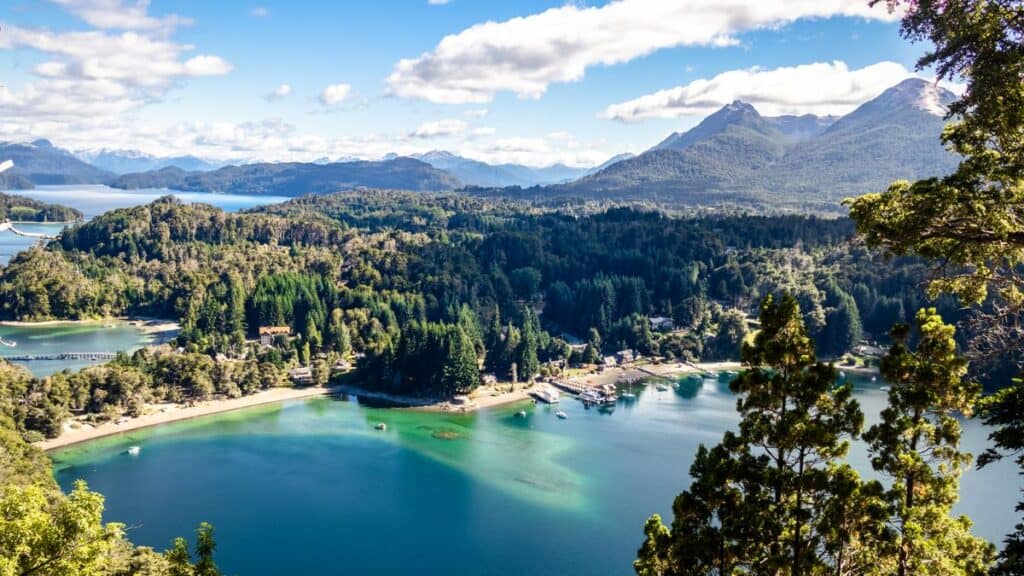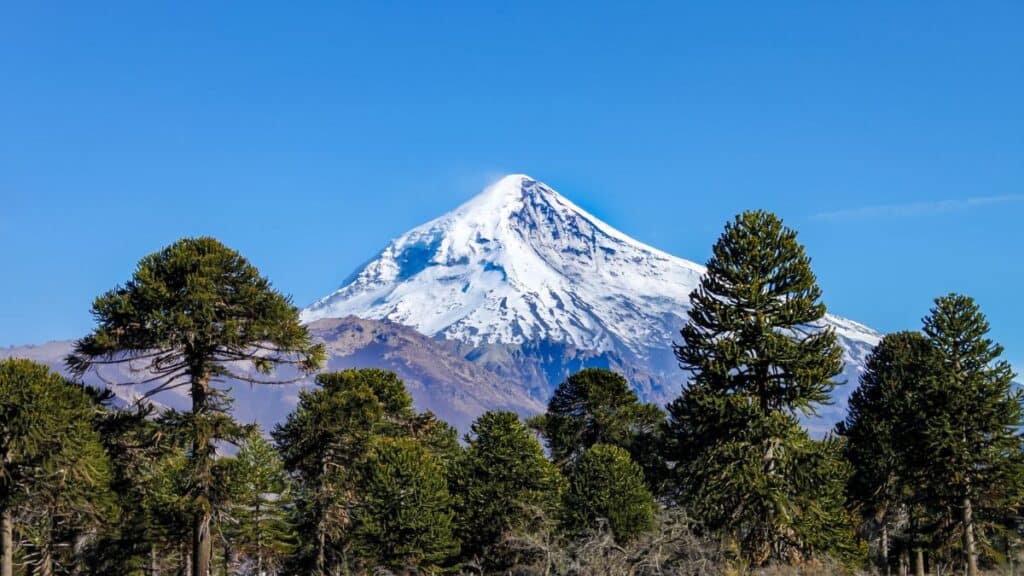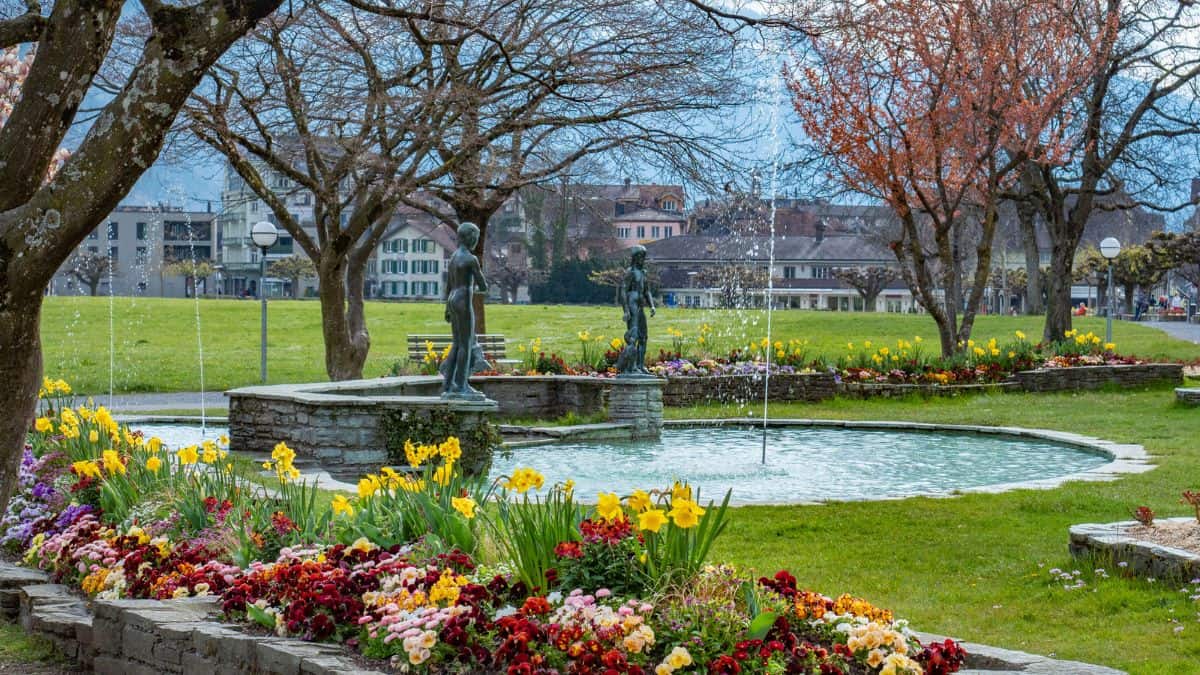Are you a nature lover who wants to experience the gamut of awesome environments our planet has to offer? Your wish will come true a hundredfold as you trek through the Argentina national parks.
About 1.5% or 14,286 square miles (37,000 square kilometers) of Argentina’s total land area is spread among 36 national parks and five other natural reserves, four of which are UNESCO’s World Heritage Sites.
Argentina is the third on the list of countries that have the most national parks after the United States and Canada. The parks’ diversity attracts many tourists from all over the world. Fascinating glaciers, mesmerizing waterfalls, and astonishing mountains keep the visitors excited and entertained.
The views are not the only thing to enjoy in these national parks. There are plenty of activities, such as hiking, mountain climbing, horseback riding, and boat trips. The amazing wildlife further complements the endless activities. You can spot animals such as penguins, whales, sea lions, and many more.
This article will give you a glimpse of the protected national park network that is Argentina’s pride. Check out which marvelous landscape will beckon during your Argentinian adventure.
16 Wonderful Argentina National Parks
1. Los Alerces National Park
Los Alerces National Park is located in the Northern Patagonia region with a total area of 723.47 sq mi (1,873.78 sq km). It is quite famous for its landscapes. A forest in the park with lakes and rivers attracts many tourists. We highly recommend doing fly-fishing at the river.
The park is home to an endangered tree called Alerce, and that is where the name of the park came from. The species is around 5,000 years old, which makes it the second longest-living species of a tree.
To get to Los Alerces National Park, first, take a flight to Esquel Airport, the closest one to the park. From Esquel, it’s about a 31-mile (50-kilometer) drive on RN 259 to reach the park’s entrance. They’ll give you a map with places to stay once you’re there.
Inside the park, you can use a car to get around on the dusty dirt roads, or you can go for a walk on the paths next to the gravel road. Some trails go into the park and include a bit of uphill and downhill walking, with changes in height from 984 to 1,640 feet ( 300 to 500 meters). If you want to try something different, you can take a ferry to see cool stuff like the Alerce Milenario or the Torrecillas Glacier.
The simplest way to get to Los Alerces National Park is to fly to Esquel and then pick how you want to explore: by car, on foot, or by boat.
Accommodation Options:
2. Iguazu National Park

Iguazu National Park is located near the border of Brazil and Argentina. Around 80 percent of the park is covered by the Argentinian side of the Iguazu Falls, the park’s main highlight. Two hundred seventy-five different falls join together to form a stunning view. The park’s total area is around 261 sq mi (677 sq km). You will find plenty of trails to hike to the top for the amazing view.
You can visit the bus terminal from Puerto Iguazu in Argentina to take the shuttle bus to the national park. The bus goes every 20 minutes. If you’re going to the peak of the high season, booking your spot in advance is good. If you’re not visiting during the high season, you can just turn up for the bus.
Accommodation Options:
3. Tierra del Fuego National Park
Tierra del Fuego National Park is in southern Argentina on Tierra del Fuego Island. The park covers an area of around 243 sq mi (630 sq km).
Here, you can find 20 different mammal species, including the gray fox, the European rabbit, the muskrat, the guanaco, the river otter, and the American beaver. Wildlife and glacial landscapes are the main highlights of this place. The park is also equipped with some challenging hikes for you to experience.
You can reach Tierra del Fuego National Park from Ushuaia, the southernmost city in the world. You can reach the park by taking the minivans waiting for you at the bus terminal in Ushuaia (which is more of a parking lot than a terminal). They leave multiple times daily. Reserve a day or two in advance if you’re going in the high season, as it may get busy.
Accommodation Options:
- MacaUshuaia 22/23
- Casa KAITEK: Luminosidad y hermosa vista
- MIRADORES DEL SUSANA DUPLEX
4. Los Glaciares National Park

Los Glaciares National Park is located in the Santa Cruz region of Austral Patagonia. It is situated on a total area of 2,807 sq mi (7,269 sq km), which makes it the largest national park in Argentina. The two main highlights of the place are Perito Moreno Glacier and Mount Fitz Roy. For hiking enthusiasts, there are plenty of trails in the park with different difficulty levels.
If you want to visit the Perito Moreno Glacier, get to the nearby town of El Calafata and take the bus from there. Be sure to book in advance, especially during high season, as the bus only leaves twice daily.
When you want to have mesmerizing views of Mount Fitz Roy, head to the hiking capital of Argentina, El Chalten. The hiking trails to view Mount Fitz Roy, like the Laguna de Los Tres hike, start from El Chalten. No need to take busses or additional transport when you’re already in town.
Accommodation Options:
5. Ibera National Park
Ibera National Park is located in the Northeastern province of Corrientes at 2,135 sq mi (5,530 sq km). The park is filled with many walking paths, allowing travelers to enjoy the abundant wildlife in this region. You can find the rarest animals here, such as capybara, caiman, marsh deer, and even an anaconda.
Accommodation Options:
- Laguna Ibera
- Ibera Full La Pequena
- Nde roga
6. Los Cardones National Park
Los Cardones is located southwest of El Rey National Park in the Northwestern side of Argentina. The park covers an area of 251 sq mi (650 sq km). The park has three main highlights: the fossil remains, the Chandelier cactus woodland area, and the Argentine saguaro.
Accommodation Options:
7. Talampaya National Park

Talampaya National Park is built on 830 sq mi (2,150 sq km), but only 5% is accessible to visitors. The park is located in Northwestern Argentina, near the Chile border. Rock formations and petroglyphs are the main highlights of this place. You can also visit the dinosaur fossils area to learn about evolution.
Accommodation Options:
- Tres Cruces Wine Lodge
- Posada Del Olivo
8. Nahuel Huapi National Park

Nahuel Huapi National Park is in the province of Rio Negro. The park’s total area is 2,722 sq mi (7,050 sq km). The park is quite popular for its lake. Lake Nahuel Huapi is one of the largest and deepest lakes in Argentina. You can also enjoy the Valdivian temperate forest by participating in hiking, rock climbing, and similar activities.
Accommodation Options:
9. Calilegua National Park
Calilegua is the only park in Jujuy province. The diverse wildlife and stunning rainforest make the whole trip special. The total park area is 295 sq mi (763 sq km), making it the largest park in the northwest region of Argentina.
Half of the bird species in Argentina can be found here. Calilegua is also home to a dangerous predator: the jaguar.
Accommodation Options:
10. Lago Puelo National Park

Lago Puelo is in the Chubut province, covering 103.38 sq mi (276.74 sq km). The park has many trails, so you will not be short of hiking opportunities. However, the places tourists love the most are Puelo Lake and Pudu. Pudu is a place where you can get sight of the smallest deer species.
Accommodation Options:
11. Los Arrayanes National Park

Los Arrayanes National Park is near the border of Chile, in Neuquén, Argentina. The park’s total area is around 6.77 sq mi (17.53 sq km). Here, you can enjoy the amazing views of the Arrayan trees. You can also spot amazing birds, such as hawks, eagles, condors, woodpeckers, etc.
Accommodation Options:
- Llao Llao Resort
- Hotel Amancay
- Villa Huapi
12. Perito Moreno National Park
Perito Moreno National Park’s main highlight is the view of Cerro Heros (Heroes Hill), a 5,643-foot (1,720-meter) elevation towering above the surrounding area with its steep slopes and small summit area. You can find this place in the province of Santa Cruz.
Many people confuse this park as the home of the Perito Moreno Glacier. Please note that the glacier is in the neighboring park called Los Glaciares National Park. Perito Moreno is nonetheless famous for its adventurous trails with amazing campsites.
Accommodation Options:
- Las Moras Cabanas and Hosteria
- Cabanas Teushen
13. Lanin National Park

Lanin is another stunning park in the province of Neuquén. It encompasses 1,591 sq mi (4,120 sq km), which makes it the third-largest Argentine national park. There are two main points of interest: Lanin Volcano and Huechulafquen Lake. The park also offers fishing, horseback riding, and canoeing activities.
Accommodation Options:
14. El Palmar National Park
El Palmar is full of Yatay Palm trees spread over land with an area of 33 sq mi (85 sq km). We highly recommend visiting the Barquin Calera ruins, located along the river. For adventurers, hiking and biking are the two most popular activities here.
Accommodation Options:
15. Monte Leon National Park
Monte Leon National Park has a total area of 240 sq mi (621 sq km). The coastal park is located in the Southeastern coastal region. It has numerous stunning beaches, varying rock formations, sandstone cliffs, and small islands. The main highlight, however, is the penguins. The park is home to the 4th largest colony of penguins in Argentina.
Accommodation Options:
- No nearby hotels.
16. Aconquija National Park
Aconquija was declared a national park in 2018 to preserve wildlife and glaciers. The park is located in the Tucuman province, with an area of almost 193 sq mi (499.94 sq km). It has more than 400 wildlife species, including the coati, gray fox, river wolves, and mountain fox. We highly recommend visiting here if you love scenic views and wildlife.
Accommodation Options:
For more accommodation options, you may click on the map.
5 Expert Tips to Enjoy Argentina National Parks
Follow the below-mentioned tips to get the best out of your visit to Argentinian National Parks.
- The best time to visit most of these national parks is between November and February.
- Pack good sun protection, a scarf, gloves, a water bottle, binoculars, and hiking shoes.
- Keep some cash for your visit to the national parks.
- Check the hiking difficulty level before heading to any national park.
- Rent a car for an easier and more private Argentinian national parks travel experience.
How To Stay Safe During Your Visit In Argentina National Parks?
When exploring the national parks in Argentina, always adhere to park rules and stay on marked trails to protect both the environment and yourself. It’s important to prepare for variable weather conditions by wearing appropriate clothing and carrying necessary gear.
Additionally, consider protecting yourself with travel insurance such as SafetyWing, which can cover medical emergencies, trip cancellations, and other unforeseen incidents during your stay. Use the widget below to snag the perfect policy for your needs and travel with peace of mind knowing you’ve got your back covered, no matter what adventures come your way!
Frequently Asked Questions (FAQs) – Argentina National Parks
How Many National Parks Are in Argentina?
There are a total of 36 national parks in Argentina. All of them provide a unique experience to their visitors. Some are famous for wildlife, while others are equipped with stunning waterfalls and forests.
What Is the Largest Park in Argentina?
Los Glaciares is the largest national park in Argentina, covering a total area of around 2,807 sq mi (7,270 sq km. Los Glaciares National prominently features the renowned Perito Moreno Glacier. The park allows visitors to delve into the captivating allure of the Patagonian Andes while immersing themselves in the rich and varied biodiversity of the surrounding region.
Is Patagonia a National Park?
No, Patagonia is not a national park. It is a territory shared by Chile and Argentina with nine different national parks. Five of them are located in the Patagonian region of Argentina.
Conclusion – Argentina National Parks
As the world’s eighth largest country, Argentina has a diverse range of terrains and ecosystems—from lush rainforests, majestic waterfalls, desert landscapes, mammoth glaciers, and rugged coastlines, all with an amazing variety of local flora and fauna.
Even with this list, you may be hard-pressed to pick which national parks to explore during your Argentina travels. While your itinerary will largely depend on your adventure preference, resources, and time, go where your free soul resonates. Fortunately, there’s always a next time to come back to this wonderland.
Your Ultimate Travel Guide & Booking Resources
Skyscanner is my trusted ally for booking flights, guiding me to the perfect travel options while making the journey planning process a breeze with its user-friendly interface and extensive search capabilities.
12Go Asia is my ultimate travel companion in Asia, offering the best budget service platform for seamless booking of trains, buses, ferries, and flights, ensuring every adventure unfolds smoothly and effortlessly.
Booking.com is my ultimate lodging partner. It offers many accommodations worldwide and simplifies my travel experiences with its user-friendly platform and unbeatable deals.
Get Your Guide is my go-to for personalized travel experiences, enriching my journeys with unique tours and activities curated to my interests, making every adventure unforgettable and tailored to my preferences.
SafetyWing is my peace of mind on the go, offering comprehensive travel medical insurance with affordable plans and hassle-free claims, ensuring I can explore the world worry-free, knowing I’m protected wherever I roam.
LifeStraw Go Bottle is my trusted hydration companion for outdoor adventures, filtering water on-the-go to keep me safe and hydrated, ensuring every hike or travel experience is worry-free and enjoyable.
Related Reads:
- 32 Best Places To Visit In South America – In 12 Countries!
- 14 Best Things To Do In Pumalin Park – A Patagonia Travel Guide
Founder of Spark Nomad, Radical FIRE, Copywriter
Expertise: Personal finance and travel content. I’m a full-time traveler, and I’ve been to 49 countries and 5 continents.
Education: Bachelor of Economics at Radboud University, Master in Finance at Radboud University, Minor in Economics at Chapman University.
Over 200 articles, essays, and short stories published across the web.
Marjolein Dilven is a journalist and founder of Spark Nomad, a travel platform, and Radical FIRE, a personal finance platform. Marjolein has a finance and economics background with a master’s in Finance. She has quit her job to travel the world, documenting her travels on Spark Nomad to help people plan their travels. Marjolein Dilven has written for publications like MSN, Associated Press, CNBC, Town News syndicate, and more.

